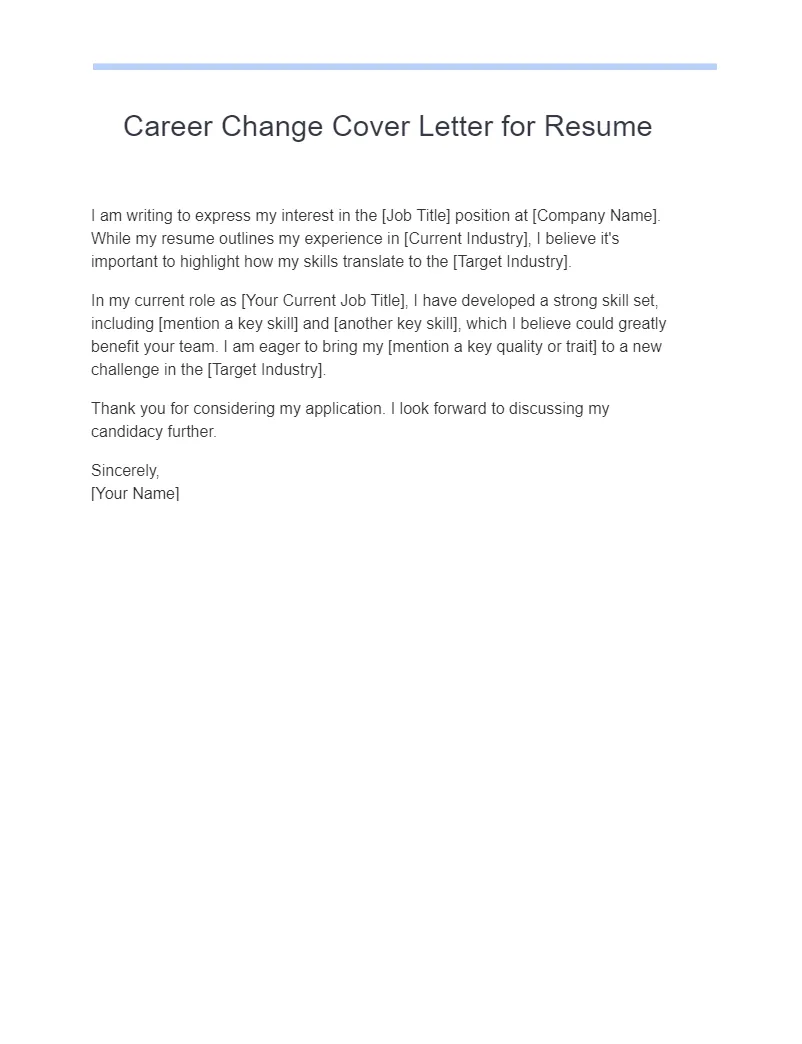What is a Career Change Cover Letter
A career change cover letter is a specialized document designed to accompany your resume when you’re applying for jobs in a field different from your previous experience. Unlike a standard cover letter, it focuses on bridging the gap between your past and present career goals. It aims to convince the hiring manager that your skills, experiences, and motivation make you a suitable candidate, despite your non-traditional background. The primary purpose is to highlight how your existing expertise translates into the requirements of the new role, demonstrating your adaptability and potential.
Why a Career Change Cover Letter Matters
The career change cover letter serves as a crucial tool to explain your transition and present yourself effectively. It’s your chance to proactively address the hiring manager’s potential concerns. Many hiring managers might be hesitant about candidates without direct experience in the field. A well-crafted cover letter helps overcome these doubts by showcasing your relevant skills and enthusiasm. It helps set you apart from other candidates and provides a clear narrative of your career aspirations.
Highlighting Transferable Skills
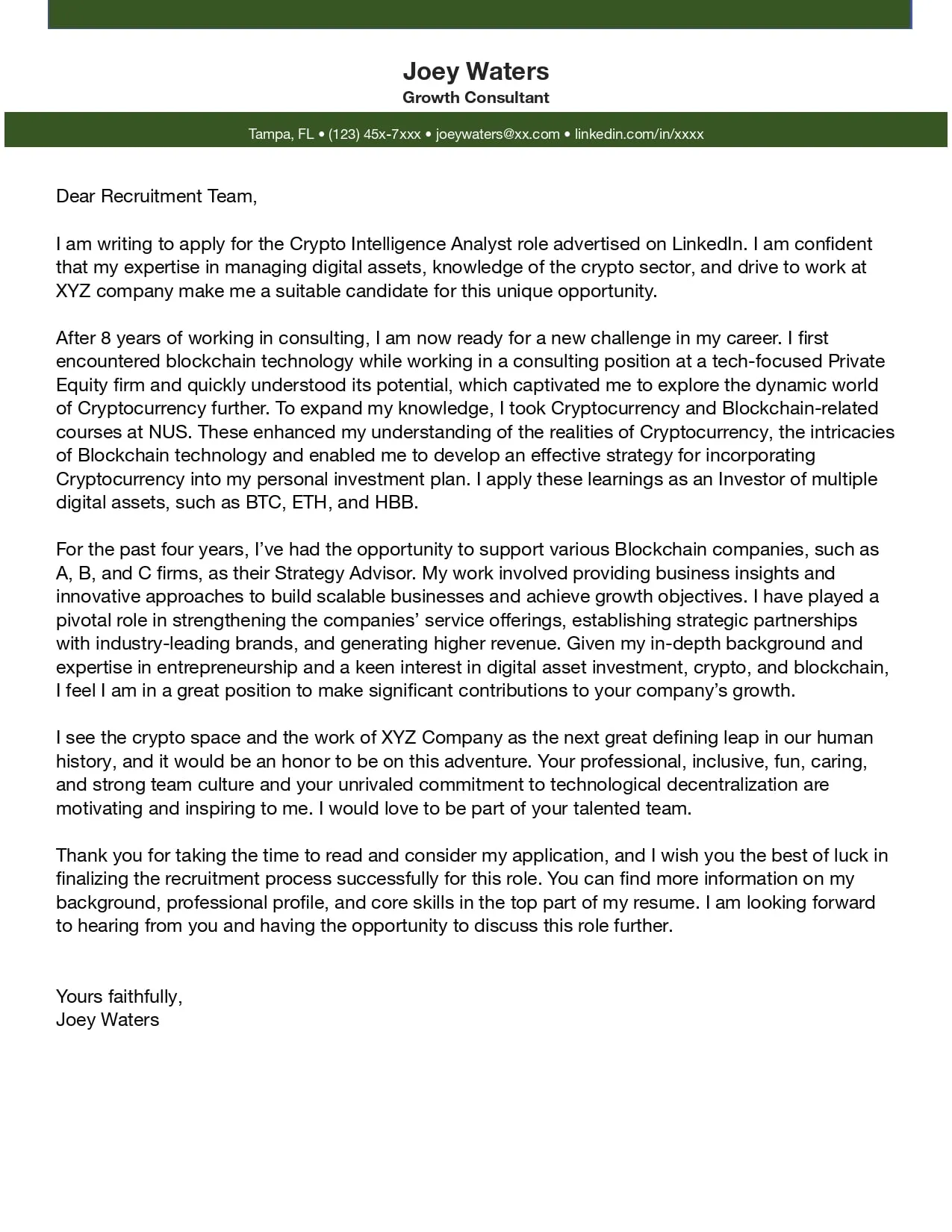
Identifying and emphasizing your transferable skills is a cornerstone of a successful career change cover letter. These are skills gained in your previous roles that are applicable to the new field. Think about leadership, communication, problem-solving, project management, and any technical abilities. These are the core competencies that make you a valuable asset regardless of industry.
Identifying Your Skills
To begin, create a comprehensive list of your skills. Review your past job descriptions and identify the tasks and responsibilities. Categorize your skills into technical, soft, and management categories. Evaluate each skill to determine its relevance to the new role. Use online resources and job descriptions to identify in-demand skills in your target field. Ensure that you have a clear understanding of your strengths before you begin to write the cover letter, and tailor your wording accordingly.
Showcasing Accomplishments
Focus on your accomplishments, not just your job duties. Quantify your achievements whenever possible. Instead of saying ‘Managed social media,’ state ‘Increased social media engagement by 40% within six months.’ Use the STAR method (Situation, Task, Action, Result) to structure your examples, which provides context and showcases your effectiveness. Demonstrate how you used your skills to solve problems or achieve goals in previous roles.
Addressing the Career Change
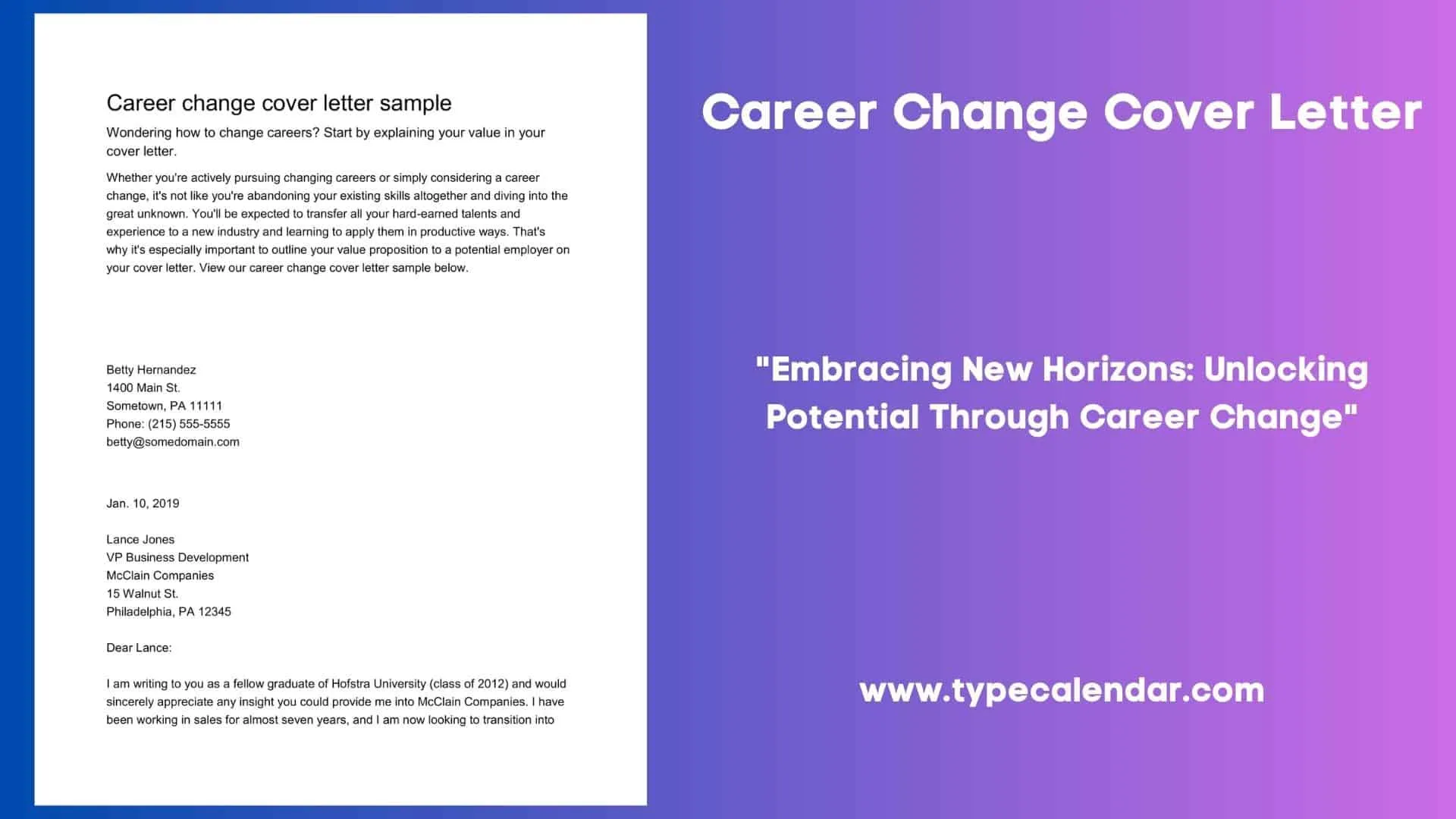
The most critical part of your career change cover letter is explaining the reason for your transition and what you are looking for in your new role. You can use a positive and strategic approach to your shift. Clearly explain why you are making a change, and how your experiences make you ideal for your new dream job. Avoid negative language about previous employers or jobs.
Explaining Your Motivation
Clearly articulate your reasons for the career change. Discuss your genuine interest in the new field. Be specific. If you are passionate about technology, mention how you have taken courses, self-taught, or engaged in personal projects. Show how the job you are applying for is aligned with your values and career goals. Highlight your commitment to the industry and express your eagerness to learn and contribute. Your enthusiasm will make the reader more interested in you.
Acknowledging the Transition
Acknowledge the change and connect it to the new job. Frame your past experience to show your suitability for the role. Explain how your background makes you uniquely prepared, despite the change. Briefly describe any steps you’ve taken to prepare for your career shift. Demonstrate how your diverse experience brings a unique viewpoint to the position. This will make you stand out among candidates with similar backgrounds.
Structuring Your Cover Letter
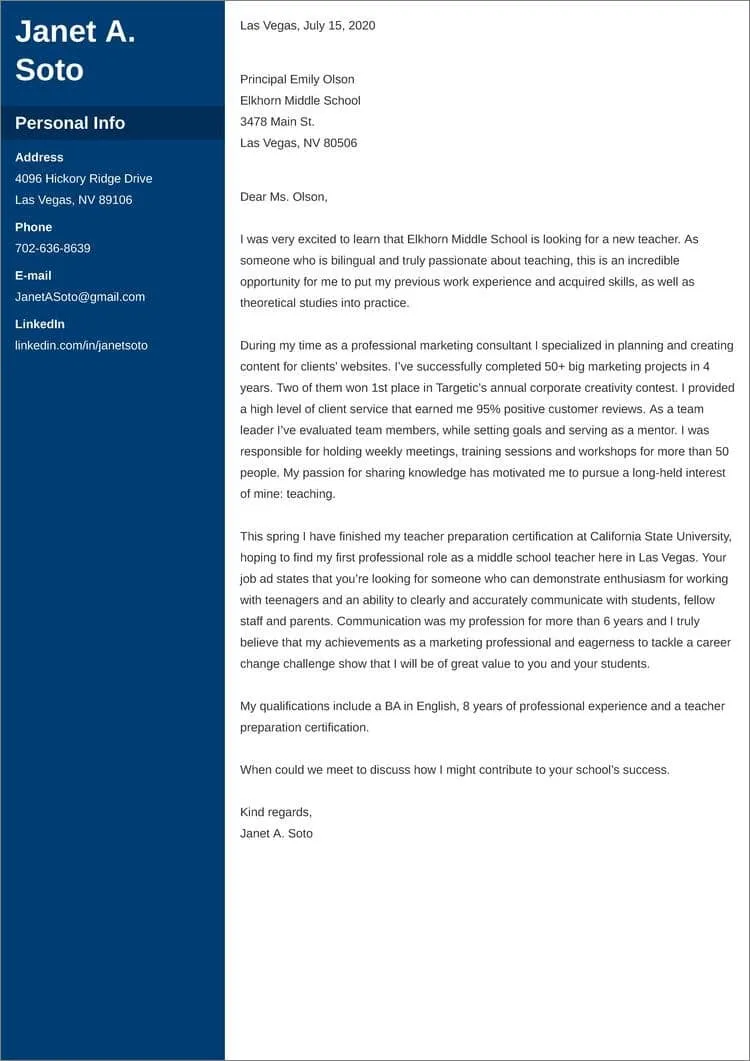
The structure of your career change cover letter is essential. It will determine how well the reader comprehends the points you are making. Good formatting makes your letter easy to read. Avoid using any complicated sentences and keep the tone conversational.
Formatting and Layout
Start with a professional heading and make sure the format is standard. Use a clean, easy-to-read font like Arial or Times New Roman. Maintain a consistent font size, typically between 10 and 12 points. Use single-spacing within paragraphs and double-spacing between paragraphs. Make sure your letter fits on one page. Proper formatting is important for creating a good first impression.
Header and Contact Information
At the top, include your name, address, phone number, and email. Include the date and the hiring manager’s name and title, if available. Use a professional email address. Ensure your name and contact details are easy to find and read. Proofread everything meticulously to avoid any errors in your contact information.
Body Paragraphs and Content
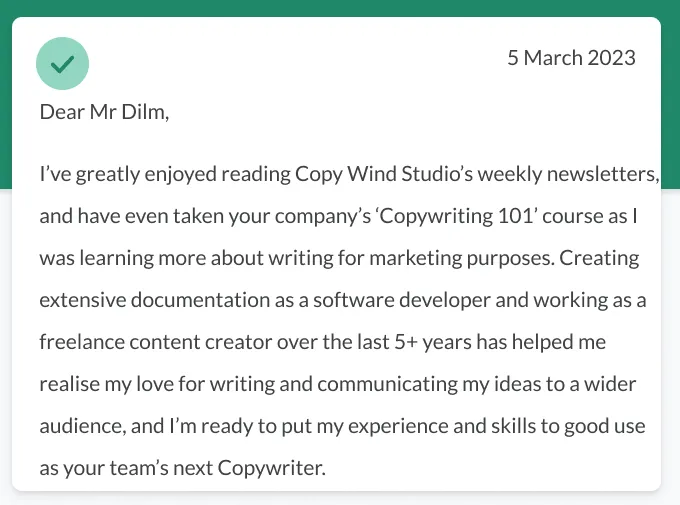
The body paragraphs should tell your story. Keep your language concise and to the point. Each paragraph should have a specific purpose. Start with a strong opening and end with a call to action. Avoid long paragraphs. Break up text with bullet points to make it easy to read.
Opening Paragraph
The opening paragraph should grab the reader’s attention. State the position you are applying for and where you found the listing. Make a statement about your enthusiasm. You can also mention your career change and your passion for the new industry. Briefly introduce yourself, and highlight your value proposition. This is your chance to create excitement.
Middle Paragraphs
Use the middle paragraphs to showcase your transferable skills. Provide examples of how your accomplishments are applicable to the new role. Explain your motivation for changing careers. Explain why you are a good fit for the role. Align your skills with the job description’s requirements. Don’t just list your skills; provide specific examples that illustrate them. This makes the letter more persuasive.
Closing Paragraph
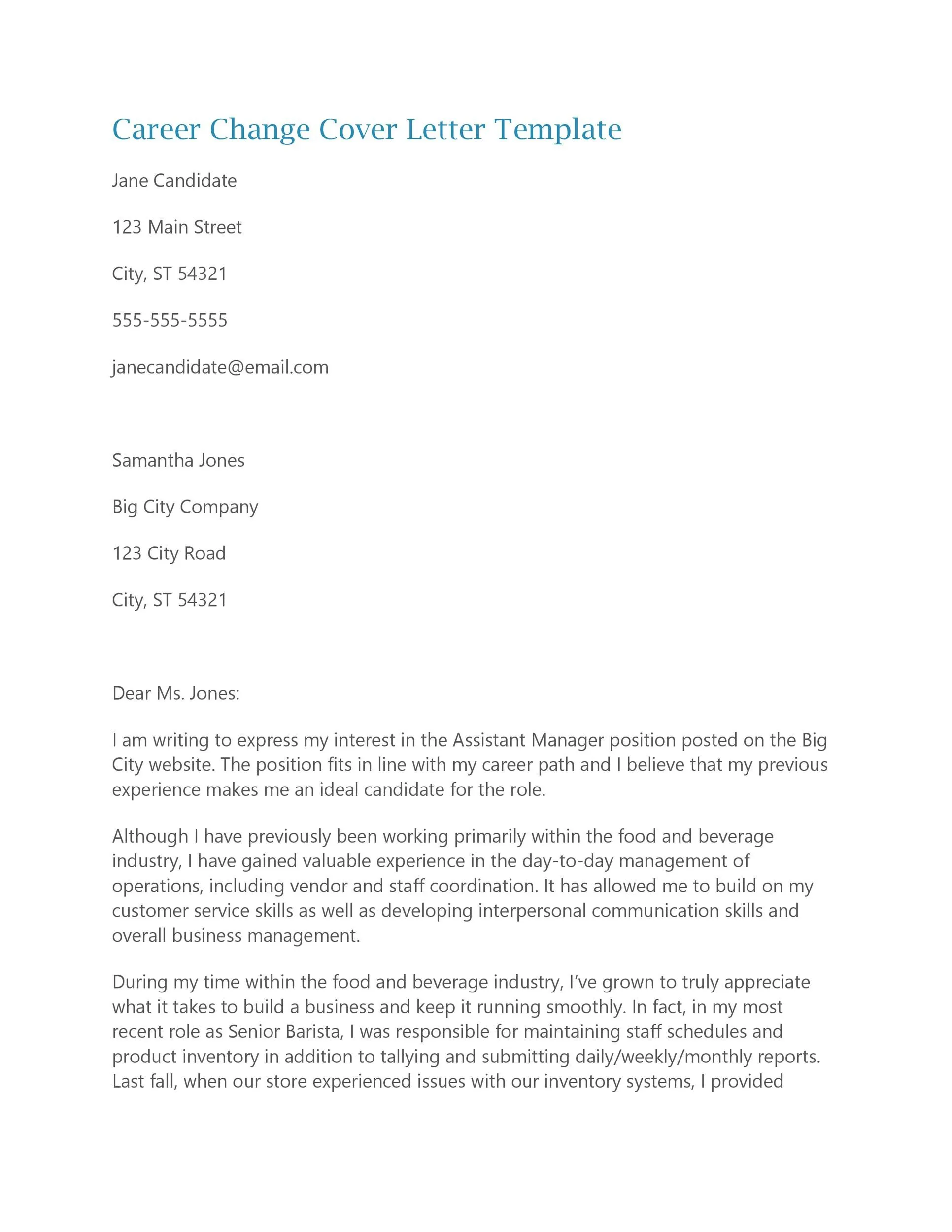
In the closing paragraph, reiterate your interest in the position. Thank the hiring manager for their time and consideration. Clearly state your availability for an interview. Show your confidence and enthusiasm. Restate your relevant qualifications. End with a professional closing, such as ‘Sincerely’ or ‘Best regards,’ followed by your name.
Essential Cover Letter Do’s
There are certain practices that will help you in your career change. These will help boost your chances of landing the job you are after.
Research the Company and Role
Thoroughly research the company and the specific role. Tailor your cover letter to each application, using the company’s values and mission. Use keywords from the job description to showcase your understanding of their needs. Demonstrate that you understand the company culture and how you can contribute to their goals. This will show your interest and attention to detail.
Tailor Each Letter
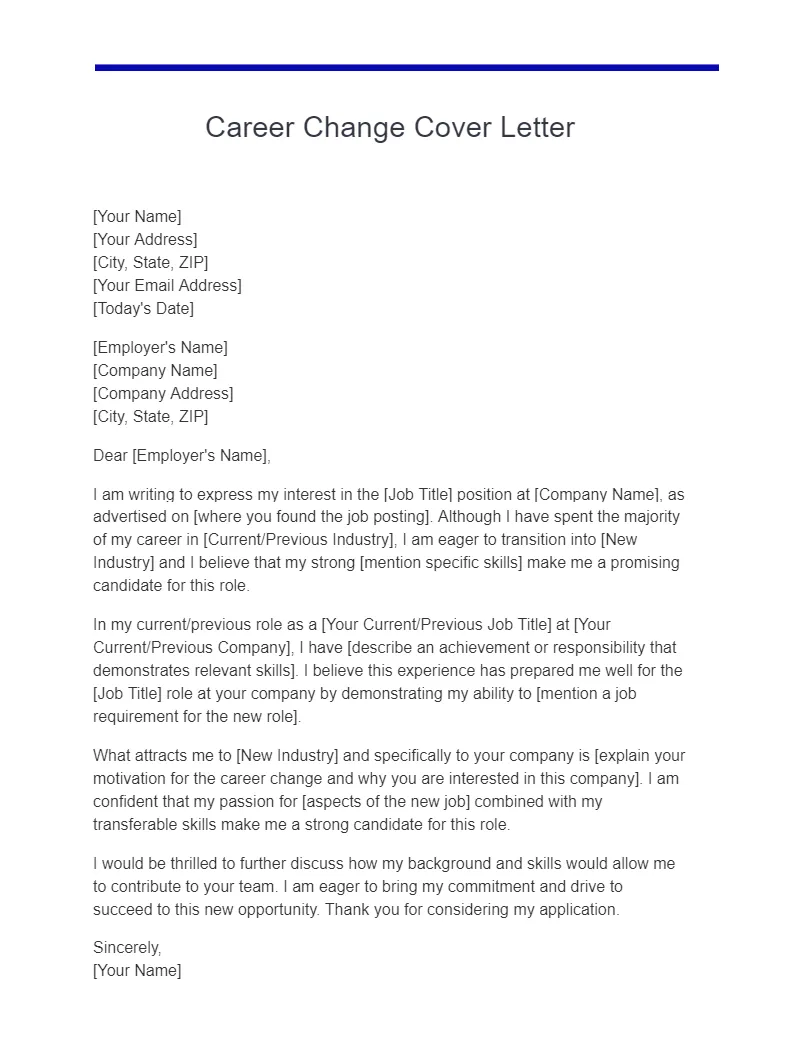
Avoid using a generic template. Customize each cover letter to match the job requirements and the company. Use the job description to identify essential skills and experiences. Highlight your achievements that align with the role’s needs. Tailoring your cover letter shows you have taken the time to understand the position and the company. Take the time to personalize it to reflect the specific job.
Proofread Carefully
Proofreading is very important. Carefully review your cover letter for grammar, spelling, and punctuation errors. Ask a friend or mentor to review it for you. Mistakes can undermine your credibility. Ensure your cover letter is professional and polished. This is an indication of your attention to detail.
Key Considerations for Different Fields
Some industries may require certain things. Be aware of these things and use them to your advantage.
Cover Letters for Tech Careers
Emphasize technical skills and projects. Showcase any coding experience or certifications. Highlight your understanding of tech trends and terminology. Use language that resonates with tech professionals. Your cover letter should reflect your awareness of industry standards. It is also important to mention any personal projects. Also make sure that your letter is concise and to the point.
Cover Letters for Creative Fields
Showcase your creativity and personality. Include a portfolio link or samples of your work. Highlight any relevant projects or collaborations. Express your unique artistic vision. Use a creative writing style to demonstrate your communication skills. Reflect your passion for creativity. Make sure your letter is visually appealing and professional.
Cover Letters for Business and Finance
Emphasize analytical skills and business acumen. Showcase your understanding of financial concepts. Highlight any relevant certifications or licenses. Use data to support your achievements. Be professional and detail-oriented. Use industry-specific language. Show your attention to detail and demonstrate your communication skills.
Conclusion
Writing a career change cover letter requires careful planning and execution. By highlighting your transferable skills, addressing your career change, and tailoring your letter to each job, you can significantly increase your chances of landing your dream job. Remember to proofread, research the company, and be yourself. With practice and effort, your cover letter will help you succeed in your career change.
